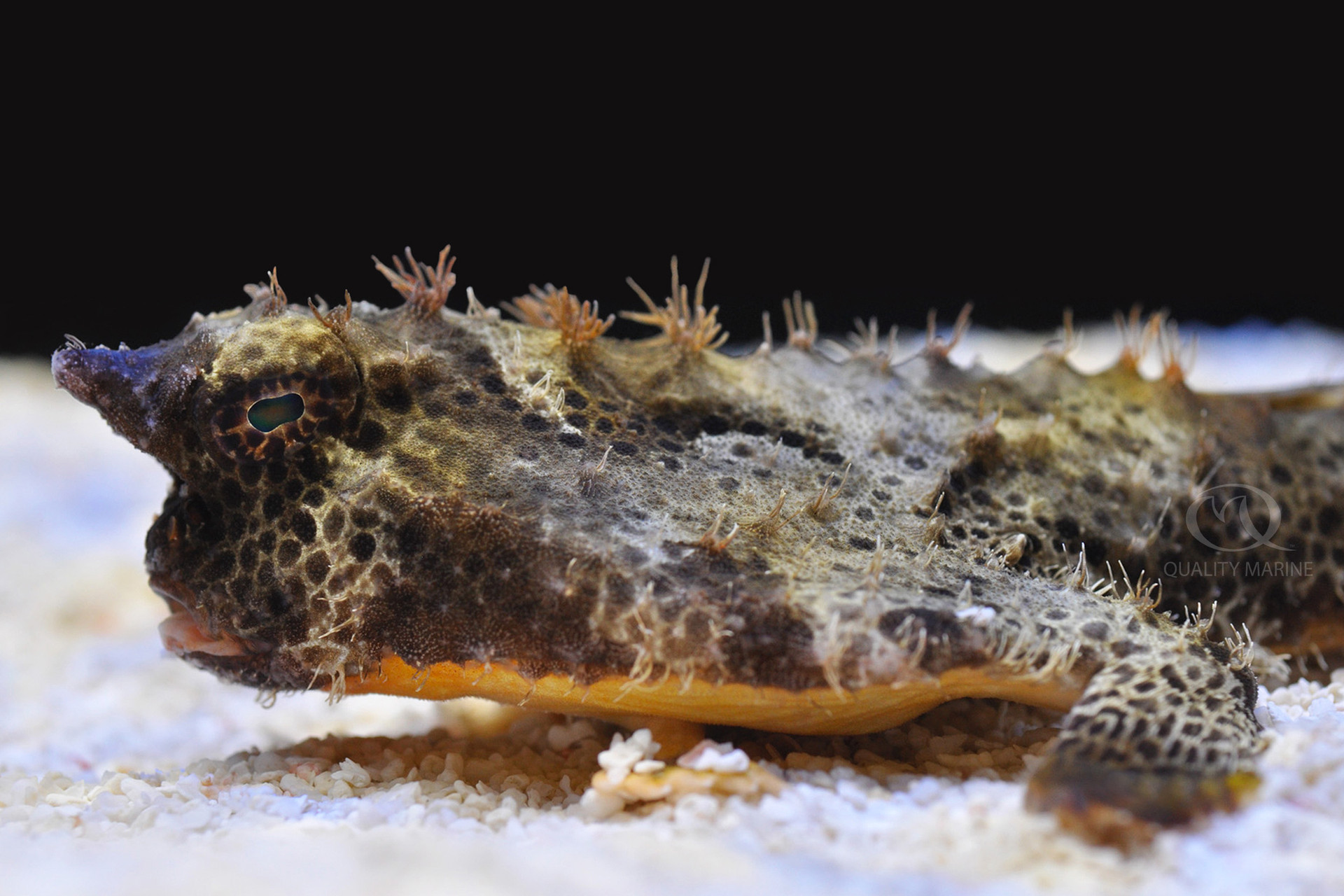The Other Batfish

In the parlance of today's fish geeks, Ogcocephalus corniger is an oddball; a fish that is weird looking, weird acting, or both. In this case, it's both. O. corniger looks like the result of a mad scientist experiment crossing a Flounder and an Anglerfish. They are much flatter than most Anglerfish, though they do have the esca (the little lure on their forehead that Anglers use to tempt fish into eating range.) The lure on Ogocephalus corniger is interesting because this species can entirely retract it into their forehead! Also like an Anglerfish, O. corniger use their fins as though they were feet, “running” along the bottom more than swimming. Though, like the flounder, they also occasionally partially bury themselves under the substrate.
The common name of Ogcocephalus corniger also seems like a mix up. It is usually called a “batfish” though is not closely related to many of the other fish called a batfish from the genus Platax. Google “Platax pinnatus” if you are unfamiliar with batfish in general, and you will quickly see the differences we are referencing. Usually Ogcocephalus corniger is called the “Longnose Batfish” and sometimes the “Walking Longnose Batfish” though in Cuba they call it “Pez Diablo Narizón” or the “Devil Nose Fish.” In Mandarin Chinese, it is written 角蝙蝠魚 and this translates roughly to “Horned Batfish.”
Keeping the Longnose Batfish is mostly straightforward. They don't have any out of the ordinary water quality parameter needs; consistently low nutrient levels, stability of salinity and temperature should be the focus here. They are found at a variety of depths, and thus water temperatures in the wild, though obviously they are a tropical species and thus a tank in the mid 70s to 80 or so is a safe zone. They prefer to bottom dwell, and as such don't need, or specifically like very bright lighting. If you choose to keep them under high par lighting, be sure to give them adequate shaded places to hide from it. They will be more active, more of the time in displays that are more dimly lit. The Longnose Bat doesn't need a huge tank, though the bigger the footprint, the more you get to watch it “walk” which is obviously cool. They can be kept in aquariums as small as 75 gallons, though a better size would be 120+ for the lifespan of the fish. They should be fed large meals, infrequently; depending on the size of meal and the size of the specimen, they can be fed from once a day down to once every 2 or 3 days.
Speaking on feeding, there are really only two aspects of Walking Longnose Batfish husbandry that require specific attention, and the first is feeding. Frequently, these fish will require target feeding and sometimes live food. If using a feeding stick to move silversides around in front of your fish doesn't get it to eat, you may need to start it on feeder shrimp or guppies. The second aspect that requires extra thought and effort is choosing tankmates. Other fish should not be so small as to be prey sized, as they will be eaten if caught, and fish that are notorious pickers are also bad choices as the Longnose Batfish looks like substrate or rock and will get harassed frequently as a result. Specifically avoid Arothron Puffers. While the Batfish is very unlikely to pick on your corals, they do frequently bury themselves and move a large amount of sand around. This suspended sand could be an irritant for some corals, so keep this in mind.
If you're looking for an amazing fish that almost no one has in their aquarium as the showpiece for your aquarium, the Walking Longnose Batfish offers supreme oddball status. They are engaging to keep and bring endless hours of intrigue to your display. If you're interested in getting one, have your Local Fish Store call Quality Marine today!